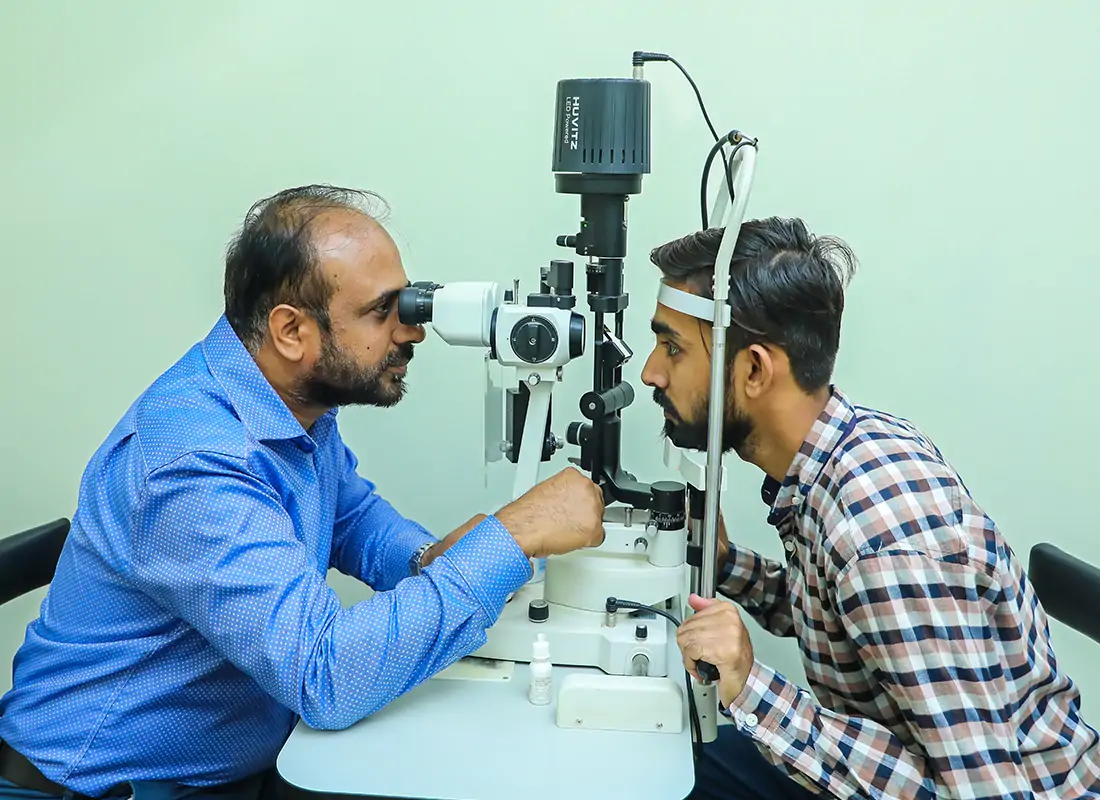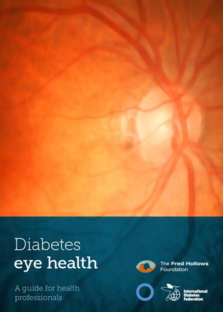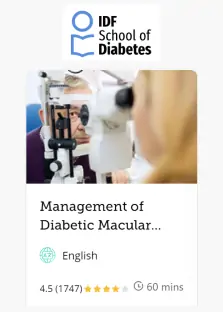Eye complications, such as diabetic retinopathy, can affect people living with diabetes. These complications cause vision loss, which can lead to blindness. Over 1 in 3 people with diabetes will develop some form of vision loss during their lifetime.
High blood glucose, blood pressure and cholesterol levels are the leading causes of vision impairment. All people with diabetes are at risk of developing diabetes-related eye complications, specifically diabetic retinopathy. Regular eye checks and maintaining glucose and lipid levels in the recommended ranges can help manage diabetes-related eye complications.

Know the main signs and symptoms of diabetic retinopathy:
- Blurred or distorted vision
- Floaters or spots in the field of vision
- Difficulty perceiving colours
- Vision loss
- Fluctuating vision
- Dark or empty areas in the field of vision
If you experience any of these signs and symptoms, consult a healthcare professional for further evaluation and guidance.
Understanding diabetes-related eye complications
Diabetes-related eye complications include a range of conditions that affect the eyes due to the impact of diabetes on blood vessels and nerves. These complications include diabetic retinopathy (DR], diabetic macular oedema (DME), cataracts and glaucoma.
Diabetic retinopathy occurs when high glucose levels damage blood vessels in the retina. Over time, the damaged blood vessels can leak fluid or bleed, causing vision impairment. DR is the leading cause of blindness in working-age adults, affecting approximately 1 in 3 people with diabetes.
Prolonged high glucose levels, cholesterol levels and blood pressure are key factors contributing to the development and progression of diabetic retinopathy. High blood glucose levels can damage small blood vessels in the retina. Similarly, poorly managed high blood pressure can further weaken the blood vessels, increasing the risk of DR. High cholesterol levels can further contribute to the development of diabetic retinopathy as fatty deposits can block blood vessels and reduce blood flow to the retina, impairing vision.
Over time, about 1 in 15 people with diabetes will develop diabetic macular oedema (DME), a further complication of DR that affects the middle of the eye. The blood vessels in the macula, located in the retina’s centre at the back of the eye, can become blocked. At first, vision changes can go unnoticed. However, DME can cause central vision to become blurred.
Early detection and management of diabetic retinopathy increases the chances of preserving your vision and preventing or delaying DME. Regular screening can help detect DR early and improve treatment outcomes. Timely intervention, such as laser treatment or injections, can help slow down the progression of DR and preserve vision.
Persistent high glucose levels, cholesterol levels and blood pressure are key factors contributing to the development and progression of diabetic retinopathy.
Managing the risks
Maintaining normal glucose, cholesterol, and blood pressure values is one of the most effective ways to prevent or delay diabetes-related eye complications. Working closely with a team of healthcare providers, including ophthalmologists, endocrinologists, and primary care physicians, to monitor and manage diabetes and associated eye complications can mitigate the risks of diabetic retinopathy.
In addition to managing glucose levels, healthy lifestyle habits significantly reduce the risk of diabetes-related eye complications. Regular physical activity and a balanced diet can improve overall diabetes management and eye health. For people living with diabetes, smoking can increase the risk of diabetes-related complications including eye complications. If you smoke, you should stop.
Take control of your eye health
People with diabetes can significantly reduce the risks and impact of eye complications by knowing the causes, signs and symptoms and adopting proactive measures. Regular eye exams, healthy lifestyle choices, and close collaboration with healthcare providers are central to managing and reducing the impact of diabetes-related eye complications.
Related resources

Diabetes Eye Health: A guide for health professionals

Diabetic retinopathy

